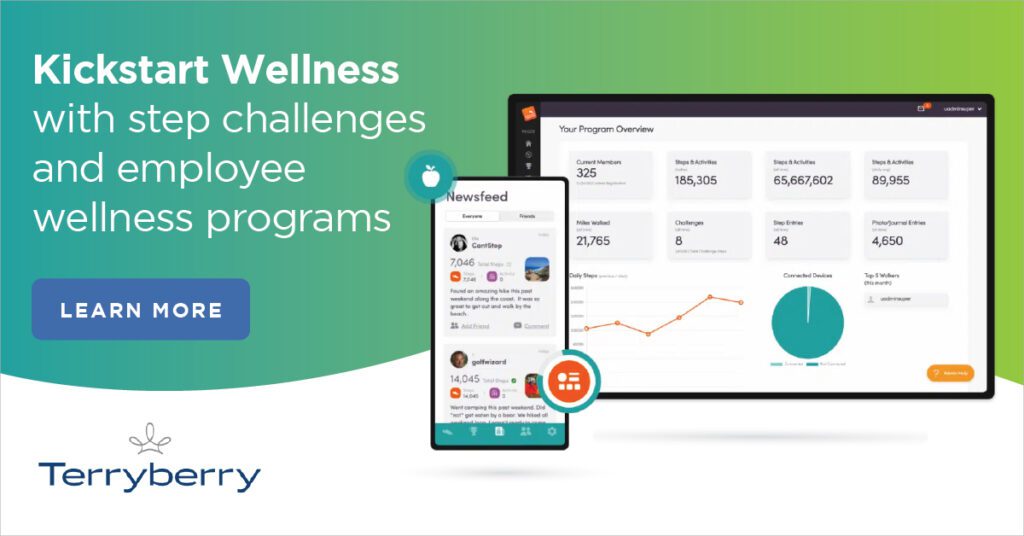December 9, 2022

In 1978, Roger Palmer sang, “It takes every kinda people to make the world go round.”
Your company is no different. Its success can be attributed to the variety of employees that keep operations running smoothly thanks to their different skills, strengths, and traits. Some of those people thrive on new and exciting physical challenges while others prefer the simplicity of a daily walk. You’ve got early risers and night owls, introverts and extroverts, the analytical and the creatives.
With a diversity of personalities, how do you find a health and wellness program that appeals to all? It’s a riddle that the majority of businesses face. A 2019 article from the Harvard Business Review observed that, “corporate wellness offerings may resonate more with already-healthy employees, and even alienate those who are dealing with health issues in the first place, mental or physical.” How can you mitigate this risk in your own wellness program?
The solution doesn’t boil down to any one specific program. Rather, the solution is in how you champion the implementation of the program you choose.
Here are 5 ways you can boost your wellness program participation and encourage every employee to stay enthusiastically involved as they develop lifelong healthy habits.
5 Ways to Boost Wellness Program Participation
1. Involve Employees in the Process
What better way to increase wellness program participation than to ask your employees what they want from their program? There's no one better to tell you what people need in a wellness program than those who are using it. Use a grassroots approach to decide what’s most important in your new program by asking employees to participate in the planning process.
A committee that constitutes a cross-section of employees in your company, representative of a variety of roles, will provide feedback for shaping an effective and sustainable program that appeals to all.
Also consider sending out regular employee pulse surveys focused on your wellness program. Employee engagement surveys are a great way to get feedback from your team and see how engaged they are with the program.
By asking the right questions, you can learn a lot about what motivates your employees and what increase your wellness program participation. These surveys can help you identify problems in your program early on before they become bigger issues.
2. Choose Metrics That Motivate
If you know you won’t be able to achieve a specific goal, are you going to put any effort into trying? Probably not. The same holds true for wellness goals.
People who average 3,000 steps a day aren’t going to suddenly start walking 10,000 a day. Someone who gets 6 hours of sleep on a good night isn’t going to be able to carve out an extra 2 hours all at once. A person at a healthy weight won’t be able to participate in a weight loss challenge.
Instead, recognize effort, involvement, and growth. When measuring your wellness program participation, look at numbers like:
- enrollment rate
- changes in health insurance costs
- absenteeism and presenteeism
3. Focus on Inclusivity
Successful wellness programs engage a wide audience. To achieve maximum wellness program participation, your program must be accessible to everyone in your company no matter how they move, where they are, what equipment they have access to, or what level their starting point is.
Think in terms of the lowest common denominator; people who run marathons, play sports, or do Crossfit 6 days a week are going to engage in their physical fitness regardless of a corporate wellness program. Instead, focus on engaging the people who wouldn’t otherwise begin their fitness journey.
Perhaps they’re intimidated by the gym, don’t know where to start, or have limited access. Thinking through an inclusive lens allows you to drive engagement through your entire population.
A comprehensive wellness program also supports people of skill and ability levels. Activity converters allow you to honor any type of movement and are an integral aspect to the inclusivity of your program and to following ADA requirements.
RELATED: Workplace Wellness Activities: 16 Ways to Support Employee Wellbeing
4. Stay in Communication
A 2012 Gallup poll found that 85% of large US companies offered a corporate wellness program but only 60% of employees in those companies even knew about the programs. To make matters worse, only 40% of those that knew about the programs actually participated.
The end results? Just 24% of people whose employers offer a wellness program actually participate in it.
Simply put, employees can't be left wondering about a wellness initiative. If you're looking for maximum participation, your team should know exactly what initiatives are happening, when they're occurring, and how to get involved.
Utilize email, in-office posters, and your company online dashboard if you have one. Also, encourage your leaders to mention wellness initiatives in their staff meetings. There's really no such thing as overcommunicating here.
In your communications, consider sharing information regarding:
-
- why a specific program was chosen for your company.
- how to navigate the program platform (videos go a long way here!).
- informational wellness content related to a current challenge.
- all aspects of health, including physical, mental, and emotional.
5. Provide Reinforcement
Even with the successful launch of a new program or challenge, enthusiasm tends to wane over time. Consistent communication is one way to encourage involvement; however, members will also respond to reinforcement that sparks renewed excitement about healthy habits.
Reinforcement comes in a range of options, and the way you approach this aspect of your wellness program stems directly from what members respond to (think back to your grassroots approach). A few ways to reinvigorate interest are to—
- utilize seasonal and holiday wellness challenges.
- incentivize whole health initiatives, such as paid time off for volunteer work and stipends that are available for counseling or therapy.
- incorporate healthy habits into workplace routines with practices like walking meetings and encouraged break times.
- provide avenues for communicating about wellness goals, whether it’s an additional Slack channel or internal message board.
Try a New Workplace Wellness Activity with Terryberry
With Terryberry, we make it easy to launch wellness challenges that keep employees engaged and motivated. Our comprehensive app allows employees to track fitness, mood, sleep, nutrition, mindfulness, and other metrics. Employees can also connect via the platform to encourage each other through message boards.
As an administrator, you’re provided with expert content and communication templates, detailed challenge results, and dedicated customer support. Contact us today to learn more!

